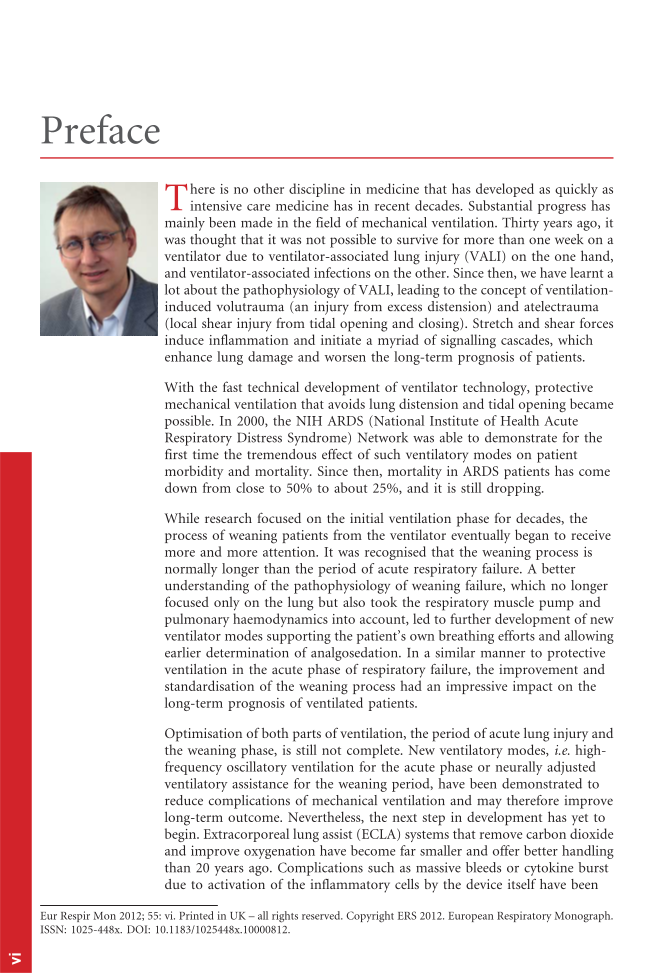Preface T here is no other discipline in medicine that has developed as quickly as intensive care medicine has in recent decades. Substantial progress has mainly been made in the field of mechanical ventilation. Thirty years ago, it was thought that it was not possible to survive for more than one week on a ventilator due to ventilator-associated lung injury (VALI) on the one hand, and ventilator-associated infections on the other. Since then, we have learnt a lot about the pathophysiology of VALI, leading to the concept of ventilation- induced volutrauma (an injury from excess distension) and atelectrauma (local shear injury from tidal opening and closing). Stretch and shear forces induce inflammation and initiate a myriad of signalling cascades, which enhance lung damage and worsen the long-term prognosis of patients. With the fast technical development of ventilator technology, protective mechanical ventilation that avoids lung distension and tidal opening became possible. In 2000, the NIH ARDS (National Institute of Health Acute Respiratory Distress Syndrome) Network was able to demonstrate for the first time the tremendous effect of such ventilatory modes on patient morbidity and mortality. Since then, mortality in ARDS patients has come down from close to 50% to about 25%, and it is still dropping. While research focused on the initial ventilation phase for decades, the process of weaning patients from the ventilator eventually began to receive more and more attention. It was recognised that the weaning process is normally longer than the period of acute respiratory failure. A better understanding of the pathophysiology of weaning failure, which no longer focused only on the lung but also took the respiratory muscle pump and pulmonary haemodynamics into account, led to further development of new ventilator modes supporting the patient’s own breathing efforts and allowing earlier determination of analgosedation. In a similar manner to protective ventilation in the acute phase of respiratory failure, the improvement and standardisation of the weaning process had an impressive impact on the long-term prognosis of ventilated patients. Optimisation of both parts of ventilation, the period of acute lung injury and the weaning phase, is still not complete. New ventilatory modes, i.e. high- frequency oscillatory ventilation for the acute phase or neurally adjusted ventilatory assistance for the weaning period, have been demonstrated to reduce complications of mechanical ventilation and may therefore improve long-term outcome. Nevertheless, the next step in development has yet to begin. Extracorporeal lung assist (ECLA) systems that remove carbon dioxide and improve oxygenation have become far smaller and offer better handling than 20 years ago. Complications such as massive bleeds or cytokine burst due to activation of the inflammatory cells by the device itself have been Eur Respir Mon 2012 55: vi. Printed in UK – all rights reserved. Copyright ERS 2012. European Respiratory Monograph. ISSN: 1025-448x. DOI: 10.1183/1025448x.10000812. vi
